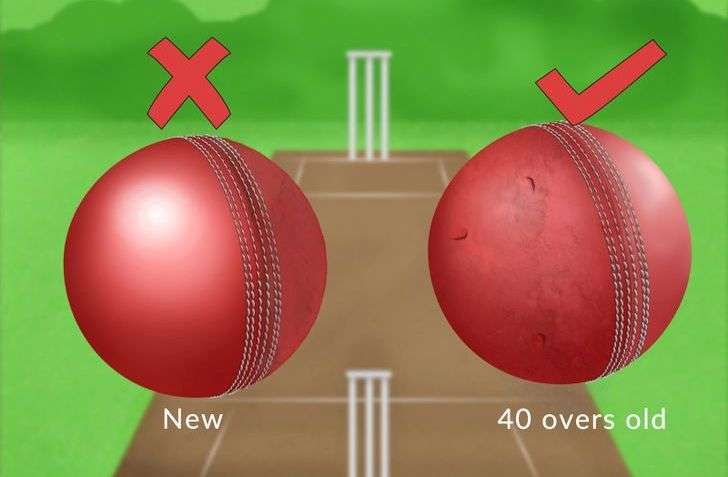
Difference between bowling 'seam up' and 'cross seam'
A bustling figure running in, as if there is an enchanting tune playing around in his mind, those eyes focused on the batsman, well they do not fumble around, he is almost there, takes a big leap, arms go over each other and out comes the ball – hurled at the batsman. The question is asked, blink and the batsman will have to decipher the complexities and come up with an answer. Ah, the joys of fast bowling, the joys of an astute defence, the joys of cricket!
For the audience sitting in the stands, and for many others following the ups and downs from the living room, this could appear as a routine, a trait which is carried out day in and day out by the bowlers. But for the bowlers, every ball is a definite plan, and a lot of thinking goes before they enter their stride. Different factors have to be understood and then accordingly they can go ahead with their delivery.
One among the many is the ability to use that round object which weighs almost 5.75 ounces. This is the weapon which can potentially wreak havoc, and thus it becomes imperative for the bowlers to understand how to make the best possible use of the ball.
Here in this segment, we take a look at the different seam positions which the bowlers use and try to delve into the minds of the bowlers and why they do what they do.
Bowling seam-up
Ever watched Dale Steyn run up and release the red ball. It is almost like poetry in motion, primarily because of the seam position. The seam is the stitched portion right down the centre of the ball, and when the ball lands on it is likely to do tricks, which can confound the batsmen. Coming back to Steyn, he is one of the best exponents of seam and swing bowling, and there is a reason why he is rated number 1 by many.
He holds the ball right down the seam and when he releases it, the fingers and wrist are right behind the seam. Thus when the ball is let go, it presents a beautiful picture with the seam bolt upright. Now, how the ball will eventually behave is so much dependent on the direction of the seam. If it is pointing towards the slip or third man, the ball will generally swing away, and this is what we call the outswinger.
Similarly, if the seam is pointing towards fine leg, the ball will hoop back in and will become an in-swinging delivery.
Apart from behaving differently through the air, the position of the seam also dictates how the ball will respond once it lands on the pitch. The seam bowlers will tell you that a concerted effort is put in to land the seam perfectly, and then the ball can extract maximum help from the surface, as it has the ability to jag either way.
Generally speaking, a swing bowler will always try to pitch the ball right up to the batsman as it allows the ball more air time to do all the tricks. The batsman will then be lured into a drive, and this is where the trick lies. The ball which will land on the seam will jag away or come in, and quite often will dismantle the batter. A victory for the swing bowler!
On the other hand, a bowler who relies on seam, will more often than not hit the pitch with an upright seam and hope to get optimum use of the surface. They anticipate a more vertical impact.
And if a bowler is an amalgamation of both the tricks, he becomes a world beater!
Bowling cross seam
Why then do bowlers in their right mind even think of bowling cross seam?
The answer once again lies in the conditions and the type of surfaces they are bowling on. Wasim Akram, one the best exponents of swing and seam talks about the art of controlling swing in conditions which heavily favour bowlers. Wasim said that there were days when he thought that he could not control the ball, and thus had to hold the ball across the seam so as to not expose the seam to the conditions.
This is one of the reasons why bowlers continue to hold the ball cross seam, as they do not want their line and length to go haywire, more so in the current game when hefty penalties are imposed on extras.
And then there is another parameter!
On pitches which are absolutely dead tracks and offer no assistance to the bowlers, this strategy is adopted. For instance, if the ball is not moving around or jagging off the surface, it becomes very easy for the batsmen to put their feet down and hit the ball wherever they want. To combat this the bowlers hold the ball cross seam and then hit the surface. They then hope that the ball lands on the leather and there is variation in bounce which poses a problem to the batsmen.
Also, by bowling cross seam, the ball is scuffed up rather quickly which then is a massive factor to generate reverse swing, another major weapon in the armoury for the bowlers.
Cross seam is thus not such a bad option, it can be used as a variation, if and when the bowler wants to mix his swinging balls with a straight one. What matters at the end of the day are the results!

